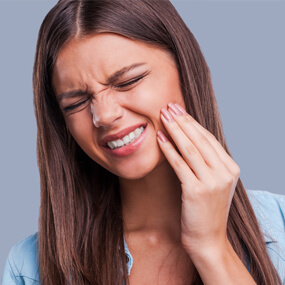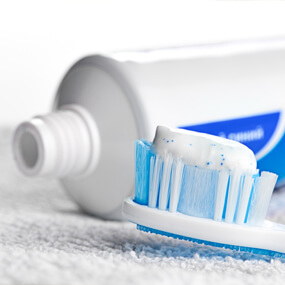8 Foods for Healthier Teeth and Gums

Brushing twice and flossing daily is essential to eliminating the food particles and sugars that mix with harmful bacteria in your mouth and become plaque. Plaque secretes acids that erode tooth enamel, form cavities, and set the conditions for gum disease. Plaque also eventually solidifies into tartar.
The discussion about eating and oral health often focuses on which foods are bad for your teeth. But recent research has found that certain foods are actually beneficial for your teeth. These items are often referred to as functional foods because they promote heart health, oral health, and so forth.
Here are eight functional foods that may be particularly teeth-friendly:
1. Sugarless Gum
Christine D. Wu researches pediatric dentistry at the University of Illinois at Chicago (UIC), and she recommends chewing sugarless gum after eating. Chewing promotes saliva production, which helps to wash away bacteria. Gum with sugar, however, is bad because it helps to produce plaque.
2. Milk
Dr. Wu and her team at UIC published research regarding milk as a functional food in the Journal of the American Dental Association. The study found that drinking a glass of milk after eating a sugary cereal better reduced acid levels in the mouth than drinking water or apple juice.
According to Wu, milk neutralizes the acids that are a byproduct of plaque bacteria. She also noted that the milk in a bowl of cereal does not have the same effect. This is because the milk becomes syrupy and sweet and is no longer able to neutralize the acid. Milk with a piece of chocolate cake, however, may work.
3. Cheese
If no milk is on hand, you can always have a bit of cheese after your dessert. The Academy of General Dentistry recently published a study regarding cheese as a functional food. The research subjects were children age 12 to 15, and it found that those who ate cheddar cheese experienced lower acidity in the mouth than those subjects who ate sugar-free yogurt or who drank a glass of milk.
After eating the cheese or yogurt or drinking the glass of milk, the subjects rinsed their mouths with water. The researchers then tested the pH levels in their mouths after 10, 20, and finally, 30 minutes. Those who ate yogurt or drank milk experienced no significant changes, but those that ate cheese experienced a substantial drop at each of the three measurement intervals.
Wu was not involved in this particular research but theorized that the cheese is neutralizing the acid in the mouth. In addition, chewing the cheese is encouraging saliva production—and thus washing more acids away—in a manner that is not occurring when drinking the milk or eating the yogurt.
4. Tea
Many black and green teas contain polyphenols, which are micronutrients that contain antioxidants. These may provide many health benefits and are known to slow the growth of the bacteria that leads to cavities and gum disease. In fact, researchers at UIC found that people who rinsed their teeth with black tea had less plaque accumulation than those who rinsed their teeth with water.
The UIC team had the subjects rinse 10 times a day, one minute at a time. Not only did the tea reduce plaque levels, but it reduced the size and adhesiveness of the plaque as well. This happens because the polyphenols interfere with bacteria clustering together. Wu and her team also found that polyphenols suppress odorous compounds in the mouth and that black tea, in particular, helps combat bad breath.
5. Cranberries
Cranberries are another food that may provide many health benefits, and like tea, cranberries contain polyphenols. Eating fresh cranberries as well as sugar-free cranberry juices and sauces can inhibit plaque sticking to your teeth. Wu warns, however, that many cranberry products include sugar due to the tartness of the fruit and that sugar will undermine any potential benefits the cranberries may have provided.
6. Raisins
Raisins are naturally sweet but do not contain sucrose. They are an excellent sweet option without the sugars that cause plaque to form and bind to your teeth. Wu also recommends raisins because they contain phytochemicals, which may destroy plaque bacteria. Raisins also have properties that may slow the growth of bacteria that leads to gingivitis and more serious gum disease.
7. Foods With Calcium or Phosphorous
The American Dental Association recommends vitamin-rich foods—foods high in calcium and phosphorous in particular. Good calcium sources include almonds, cheese, and leafy greens. Good sources of phosphorous include eggs, fish, and meat. Calcium is great for your bones, including your jaw. Both vitamins help to keep your tooth enamel strong and actually have restorative qualities in that they can fill lesions in tooth enamel caused by acids by depositing minerals into them.
8. Crunchy Foods
Chewing not only promotes saliva production, but it disrupts dental plaque and therefore serves as a cleaning mechanism itself. Foods that require serious chewing—such as apples, celery, carrots, and cucumbers—are excellent snacking options because they help to clear away bacteria and exercise your mouth.
Eat for Better Oral Health
Your diet can play a significant role in the health of your teeth and gums. At Scottsdale Cosmetic Dentistry Excellence, you will receive personalized dental care from Jeffrey D. Clark, DDS, along with advice about the foods you eat and the beverages you drink. Begin eating for better oral health today. Call our office at 480 585 1853 with any questions you may have and to schedule a consultation.




